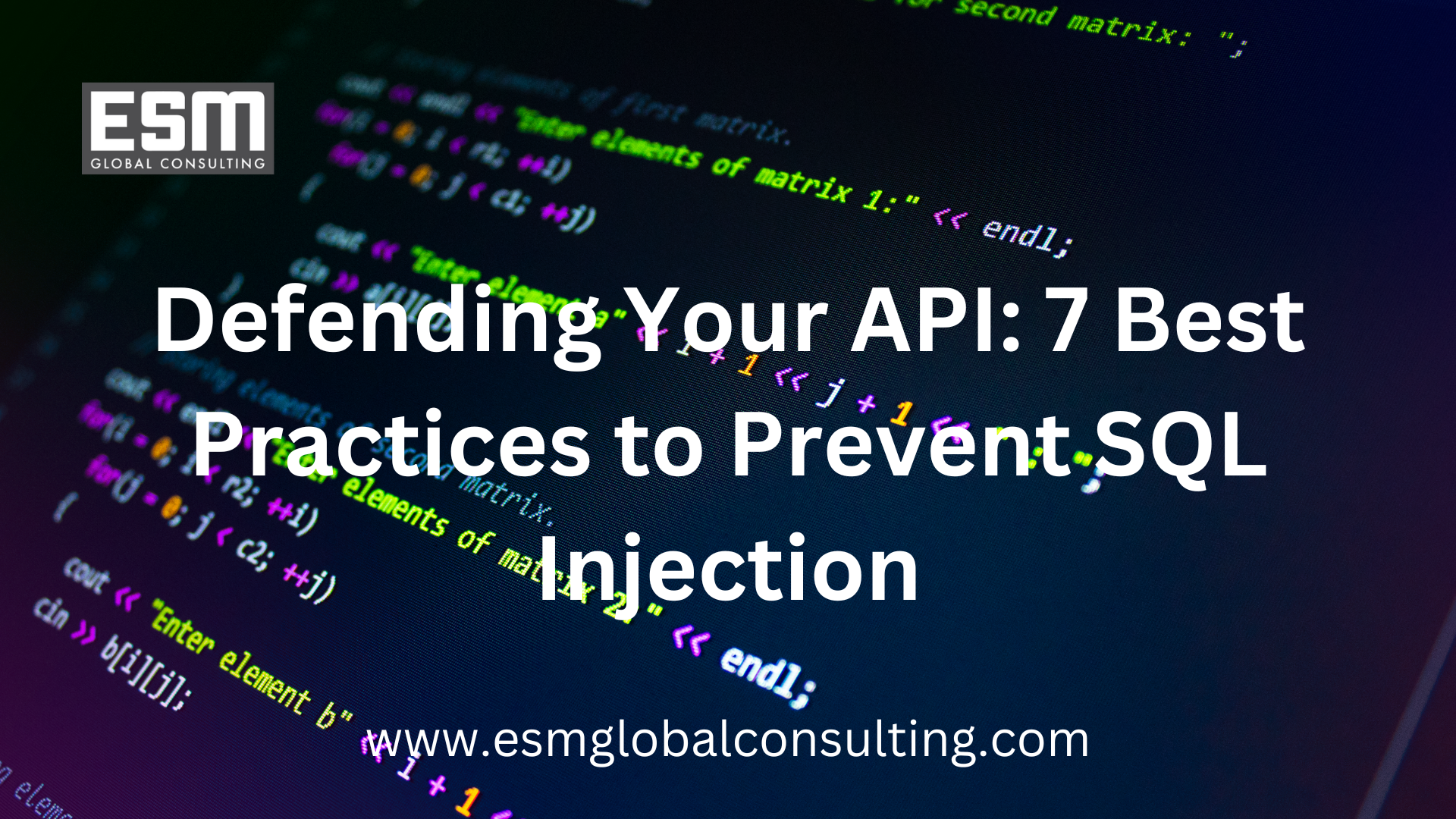Defending Your API: 7 Best Practices to Prevent SQL Injection
APIs are the backbone of modern applications, powering everything from mobile apps to IoT devices. But with great connectivity comes great responsibility—especially when it comes to security. One of the oldest and most persistent threats to APIs is SQL injection (SQLi). This attack exploits vulnerabilities in your API endpoints to manipulate database queries, potentially exposing sensitive data or compromising your system.
To safeguard your APIs from SQLi, here are 7 best practices you need to implement right now.
Validate and Sanitize Input
Why It Matters: SQL injection often occurs because an application accepts untrusted user input without proper checks. Input validation ensures that the data entering your API is in the expected format, while sanitization removes any potentially harmful characters.
How to Do It:
Validate inputs for length, type, and format (e.g., email addresses or dates).
Use libraries or frameworks to sanitize inputs, such as
htmlspecialchars()in PHP or input validation middleware in Node.js.
Example:
Instead of accepting a raw username:
SELECT * FROM users WHERE username = '$username';
Validate and sanitize it to allow only alphanumeric characters.
Use Parameterized Queries and Prepared Statements
Why It Matters: Hardcoding user input into SQL queries is like leaving your doors wide open for attackers. Parameterized queries separate SQL code from user input, ensuring attackers can’t inject malicious SQL commands.
How to Do It:
Use parameterized queries in your code, regardless of your programming language.
Examples:
Python with MySQL:
cursor.execute("SELECT * FROM users WHERE username = %s AND password = %s", (username, password))
Java with JDBC:
PreparedStatement stmt = connection.prepareStatement("SELECT * FROM users WHERE username = ? AND password = ?");
stmt.setString(1, username);
stmt.setString(2, password);
Implement API Gateway Security
Why It Matters: An API gateway acts as a protective barrier between your users and your backend, filtering out potentially harmful requests.
How to Do It:
Use modern API gateways like AWS API Gateway, Google Cloud Endpoints, or Kong Gateway.
Configure rate limiting, request throttling, and input validation in your gateway settings.
Enable logging to monitor suspicious activity.
Deploy a Web Application Firewall (WAF)
Why It Matters: A WAF can detect and block SQL injection attempts before they reach your application. WAFs analyze traffic patterns and filter out malicious payloads using preconfigured rules.
How to Do It:
Use cloud-based WAF solutions like AWS WAF, Cloudflare, or Azure WAF.
Configure SQL injection protection rules for your API endpoints.
Pro Tip: Pair your WAF with an API gateway for layered security.
Enforce Least Privilege for Database Users
Why It Matters: Even if attackers gain access to your database through an SQL injection, limiting database user permissions minimizes the damage.
How to Do It:
Assign database roles with only the permissions they absolutely need.
Avoid using
rootoradminaccounts for database connections in your application.Use read-only accounts for queries that don’t need write access.
Example: A user accessing customer data should only have SELECT privileges, not INSERT, UPDATE, or DELETE.
Secure Your Error Messages
Why It Matters: Detailed error messages can inadvertently reveal information about your database structure, making it easier for attackers to craft SQL injection payloads.
How to Do It:
Log detailed error messages on the server side, but show generic messages to the client.
Use tools like Sentry or LogRocket to manage server-side error logs securely.
Bad Practice:
Error: SQL syntax error near 'username' in 'WHERE username = '' OR 1=1 --''. Good Practice:
Error: Invalid input. Conduct Regular Security Testing
Why It Matters: New vulnerabilities can creep into your code as your API evolves. Regular testing ensures you stay ahead of potential threats.
How to Do It:
Use automated tools like OWASP ZAP or Burp Suite to scan for vulnerabilities.
Perform penetration testing on your API endpoints.
Include SQLi testing in your development pipeline with CI/CD tools like GitHub Actions or Jenkins.
Bonus Tip: Educate Your Team
Your developers are your first line of defense. Regular training sessions on secure coding practices, SQL injection prevention, and API security best practices will go a long way in reducing vulnerabilities.
Conclusion
SQL injection may be one of the oldest security threats, but it remains a top concern in today’s API-driven world. By following these 7 best practices—from input validation to deploying WAFs—you can significantly reduce your risk and safeguard your APIs against attackers.
At ESM Global Consulting, we specialize in API security, helping businesses build robust, secure systems that are resistant to threats like SQL injection.
Contact us today to learn more about securing your APIs and protecting your critical data!


